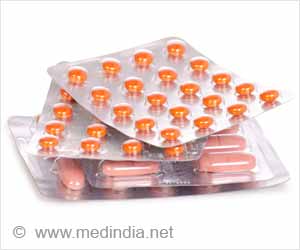Activists are warning against misleading direct to consumer ads by pharmaceutical firms and urge women particularly to be wary of them.
A long-running Merck ad featured an older woman with this message: "See how beautiful 60 can look? See how invisible osteoporosis can be?" and recommended that women ask their doctors about bone density screening.
As a result, many women started taking Merck's drug Fosamax. But this very drug, (generic name alendronate) turned out to have serious side effects.Fosamax may cut the risk of hip fracture from 2 percent to 1 percent, but there is also a 1.5 percent risk of suffering an esophageal ulcer. In addition, in a small percentage of women using Fosamax over the long term, the jawbone will start to crumble. And some research now suggests that the type of new bone created by Fosamax is more brittle and more prone to fracturing over time.
But that side of the story takes a while to get through. Meantime the coffers of the drug firm should be overflowing, while many who took the drug might be undergoing some agonizing time.
It is against such regrettable situations, activists are raising their voice. They also point out that FDA regulations are lax in this regard.
Judy Norsigian, executive director of Our Bodies Ourselves, a nonprofit women's health advocacy organization, poionts out that the pharmaceutical industry in the US spent much of its $4.2 billion direct-to-consumer advertising budget in 2005 on ads targeting healthy upper-income, middle-aged people.
A common underlying message was this: you appear to be healthy, but a deadly heart attack, hip fracture, or other medical catastrophe could occur at any time. Therefore you should take a prescription drug to prevent such problems.
Advertisement
Aging, social anxiety disorder, heartburn, restless leg syndrome, and overactive bladder are all examples of symptoms or normal physiological events that are now presented to consumers as being in need of long-term drug treatment.
Advertisement
Marcia Angell, a former editor of the New England Journal of Medicine, once put it acidly, "They are no more in the business of educating the public than a beer company is in the business of educating people about alcoholism."
Because of direct-to-consumer advertising, more people request prescription drugs from their doctors, and most doctors comply. Most lay people -- and even many physicians -- are not aware that drug ads are not checked by the FDA for accuracy beforehand, and are pulled only after complaints are made and verified.
This usually takes about six months, and the drug company is given a grace period of several additional months, by which time most ads would have been changed anyway. A company is rarely required to run a corrective ad, and there is no other penalty for misleading the public. Thus, while the FDA sends hundreds of letters each year requiring drug companies to retract their ads, most people don't hear about them.
The FDA does not require new drugs to be proven better than competing, often cheaper, drugs already on the market. Though many drugs for chronic conditions like arthritis are taken every day for years, pre-approval trials typically last no more than a few months and long-term safety studies are almost never done. Life-threatening effects may come to light only after the drug is approved and used widely.
To reduce unnecessary risk, women should seek independent sources of evidence about medicines, particularly new ones. The FDA's web site offers extensive information about medicines, herbal supplements, and vitamins, including safety alerts about the latest recalls and warnings for specific drugs.
The international nonprofit group Healthy Skepticism counters misleading drug promotion and maintains a regular "AdWatch" section on its website. Consumers should be cautious when looking for information on other websites. Many are substantially sponsored by pharmaceutical companies.
Being skeptical about drug ads and promotions is smart: it can protect both our health and our wallets, Judy Norsigian points out.
Source-Medindia
GPL/L






